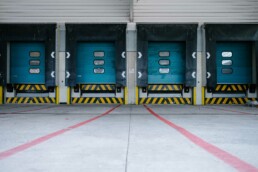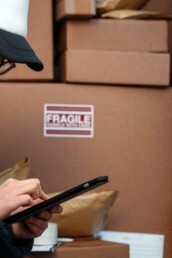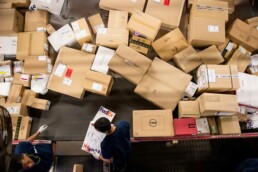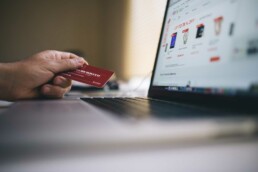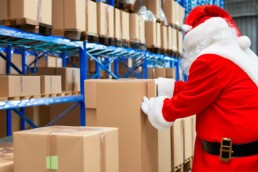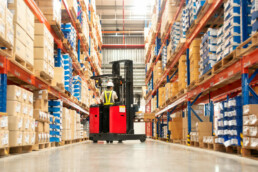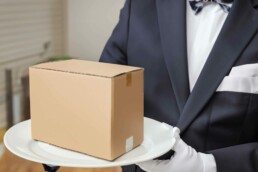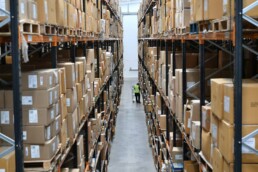Inbound and Outbound Logistics - What you need to know
Inbound and Outbound Logistics
Logistics coordinates and moves resources – people, materials, inventory, and equipment – from one location to storage at the desired destination. It is the process of doing this. Regarding e-commerce, logistics management involves a significant aspect of business operations. Furthermore, logistics is a considerable expense, with businesses spending more than $1.64 trillion on logistics-related activities last year alone. What are the main differences between inbound and outbound logistics? What are the main challenges, and how can streamlining logistics benefit your business? This text and more will cover all this, read on!
Inbound vs. Outbound Logistics
Inbound logistics refers to where goods and materials enter the supply chain to sell to the customer. Outbound logistics refers to the process where the company sells and delivers the finished products to the customer. Streamlining both aspects of logistics is crucial to the company’s profitability and success.
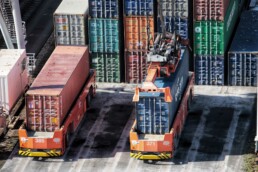
What is outbound logistics?
Outbound logistics involves storing and moving goods to the customer or end user. Outbound logistics includes the systems required to prepare, pack, and deliver packages. The steps include order fulfillment, packing, shipping, and customer service related to delivery.
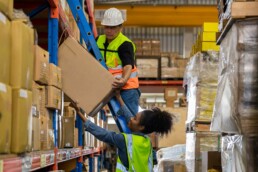
Warehousing
In order to meet customer demands, an e-commerce business needs a warehouse or storage facility to store surplus inventory. The US Business Inventory/Sales Ratio is 1.33, up from 1.26 last year. You can store your inventory in your own warehouse or partner with a third-party provider. Warehousing is a significant expense for e-commerce businesses. Whether you outsource your warehouse needs or handle them in-house, it is a crucial part of outbound logistics.
Inventory Management
Most e-commerce companies use inventory management software to maintain a consistent flow of orders and sales. Inventory management involves carrying adequate levels of stock to fulfill customer orders. It is a vital part of business management because it allows companies to boost profits and reduce overhead. There are many benefits to employing an automated inventory management system, including improved accuracy and better transparency. Inventory management also includes:
- Product locations
- Quantities of each product type
- Profit margin by style, model, product line, or item
- Setting the ideal amount of inventory to have in back stock and storage
- How many products to reorder and how often
- When to discontinue a product
Streamlined inventory management can boost profitability and improve customer experience. It allows you to capture and fulfill every sale while simultaneously avoiding overstock.
Order Processing
When a customer orders through the sales channel, a notification is sent to the warehouse for fulfillment. The staff in the warehouse receives the order and verifies its validity. They ensure the product(s) are in stock and can be made ready to send out to the customer.
Picking, Packing, and Kitting
All items are packaged, sealed, and labeled for shipment at this stage. Once an order is received and verified, the order has to be carefully picked, packed, and prepped for transport. Some items or orders, like subscription boxes, also require kitting services, where more than one product is carefully assembled into one shipment or package.
Transportation
Transportation involves any method or mode to move goods from your storage warehouse to a carrier distribution center or direct-to-customer. When moving goods to a distribution center or fulfillment facility, larger vehicles like freight carriers, semi-trucks, and rail lines are used. Then products are separated into smaller vans or vehicles to be delivered to the end consumer.
Last Mile Delivery
The final aspect of outbound logistics is the last-mile delivery to the end customer. Whether the package is delivered to a home or office, this is the culmination of the logistics journey. If the final delivery is unsuccessful or the product arrives damaged, the product may be returned, triggering an inbound logistics process (returns).
What is inbound logistics?
Inbound logistics is when a company secures raw materials, goods, and supplies to produce products it will sell to an end consumer. It is the receiving or incoming part of the supply chain cycle. A few of the critical components of inbound logistics include:
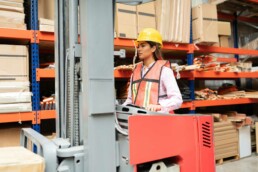
Sourcing and Purchasing
Inbound logistics starts with identifying the materials, goods, or supplies needed to build your product. Next, research potential manufacturers or suppliers of those goods or materials. Once you’ve identified suitable partners, engage with them directly to purchase and receive the materials. Maintain accurate records from purchase orders to ensure smooth reconciliation with shipments.
Transportation
When a manufacturer/vendor ships goods, they provide a notification. This notification includes a tracking number, which helps warehouse and distribution teams prepare for the efficient receipt of the items.
Receiving
First and foremost, this part of inbound logistics involves receiving shipments at the warehouse or distribution center. Loading dock staff then evaluate the shipment for damages and accuracy. Once the shipment is approved, the goods are stored in a designated storage facility or moved to a secondary manufacturing or assembly area. Finally, all goods ready for customer sales are input into the inventory management system and stored carefully.
Each step plays a crucial role in ensuring the smooth flow of goods and materials throughout the organization. Receiving shipments efficiently and accurately is essential for maintaining optimal inventory levels and meeting customer demand.
Reverse Logistics
The final aspect of inbound logistics occurs after a sale. Reverse logistics includes adding products back into the supply chain due to a product return. Check out 4 Ways to Streamline Returns Management.
Challenges of Inbound and Outbound Logistics
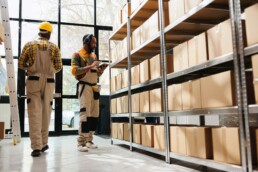
Inbound logistics challenges
The main challenges of inbound logistics include the following:
- Finding reliable and trustworthy suppliers
- Sourcing affordable suppliers and manufacturers
- Balancing inflow and outflow of goods to maintain adequate materials without overstocking
- Managing transportation delays and boosting supply chain resilience
- Maintaining receiving and quality control processes
Outbound logistics challenges
The main challenges of outbound logistics include the following:
- Hiring quality staff to manage order processing
- Maintain order accuracy and efficiency
- Negotiating transportation and shipping contracts to keep costs low
- Meeting delivery timeline expectations
- Reverse logistics management and process
Benefits of optimizing logistics
Inbound and outbound logistics are necessary for business operations to run smoothly. Without products, there are no sales, and vice versa without sales. Therefore, inbound and outbound logistics must work together for optimum success. This text provides some ideas to optimize your logistics process.
Maintain optimal inventory levels
Having too much or too little inventory is not ideal. If you order too much inventory, then you risk paying high storage fees. If you order too little, you miss out on sales opportunities and risk disappointing customers. To maintain optimal inventory levels, you need to commit to regular inventory audits, offload slow-moving stock or deadstock, invest in items with higher turnover rates, and those products with higher margins. Successful companies regularly review demand forecasts and take physical stock counts. Striking the correct inventory levels will reduce overhead costs from storage, improve product performance and profitability, and improve procurement workflows.
Improve warehouse management
Implementing a streamlined warehouse management process reduces human error and will improve order accuracy, shipping efficiency and maximize storage utilization. Most companies use software programs that help to automate inventory levels, trigger reordering events, automate picklist creation, and track shipment deliveries.
Beginner’s Guide to Third-Party Logistics (3PL)
The world of e-commerce is always changing, understanding the roll of Third-Party Logistics is integral to keeping up. This beginner’s guide to third-party logistics (3PL) will delve into the essential aspects, offering insights into fulfillment services, warehousing, and much more.
Read More…
Partner with a 3PL to optimize logistics
If you spend more than 15% of your time managing your logistics, it might be time to investigate working with a 3PL. 3PLs partner with e-commerce businesses as experts who handle inbound and outbound logistics. They manage receiving, warehousing, negotiating with shipping carriers, and returns. Some 3PLs, like Falcon Fulfillment, can provide flexible inventory storage in their fulfillment centers.
Find out more about how Falcon Fulfillment can take the stress of managing logistics off your plate. Get in touch with one of our friendly agents today.
Let’s Talk!
Dunnage - What it is and why you need it
Dunnage – What it is and why you need it
Protecting items during shipping is crucial to ensure they arrive undamaged. Statistics show that 20% of consumers return items because the consumers received damaged products. Use the right mix of dunnage to satisfy consumers’ growing expectations and to safeguard your financial investment. Working with a fulfillment partner expert in shipping, packing, and returns will help you determine what types to use. Let’s uncover what dunnage is and why you need it.
What is dunnage?
Dunnage is the packing material that protects items during shipping and handling. Dunnage isn’t a common word consumers know, but it is an integral part of fulfillment. Companies spend a lot of money and time deciding what type and quantity of materials you need for products to arrive safely at their intended destination. Dunnage can include packing peanuts, bubble wrap, paper, and even wooden crates affixed to large items and appliances.
Why dunnage is used in shipping?
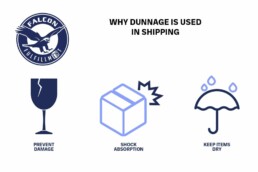
- To prevent damage – the main reason is to avoid damaging the shipped item. Imagine sending an antique vase from Europe in a box without bubble wrap, paper fill, or packing peanuts. It is not likely that the vase would arrive in one piece.
- To keep items dry – another reason dunnage is used in shipping is to keep the product from getting wet. Packages moving from shipping containers, warehouses, and trucks are often exposed to the elements. Therefore, dunnage ensures that the product doesn’t arrive in a soggy mess, even if the outer box gets wet.
- Shock absorption – parcels get dropped, pushed, bounced, and pressed during transport. Dunnage helps to absorb the vibration and minimize the jostling of the product in the package.
What types of dunnage are there?
Solid dunnage materials.

Solid dunnage materials are used for heavy, highly valuable, or oversized items. The type or combinations of materials used depends on the product material, shape, size, and shipping container. However, there are a few common solid materials used in shipping.
Wood
Wood is a heavyweight material. It is readily available, and it is a renewable resource. However, many ports and countries impose additional customs duties on wood dunnage, and others will not allow it all because of foreign pest concerns.
Solid Plastics
Solid plastic dunnage is one of the best materials for high-value goods, heavy items, or oddly shaped products. You can form it into any shape and it is made of high-density polyethylene (HDPE). This type of material is expensive compared to other options but is worth the investment when you consider the replacement costs of high-value items and large machinery.
Steel
People use steel for another solid option when shipping heavy goods or partitioning items within a single container. This type of dunnage is expensive, so you typically use it for high-value goods.
Soft dunnage materials.

People use soft dunnage when shipping lightweight and smaller items. People often use a combination of solid and soft when shipping freight. For example, a supplier might send a pallet of electronics using solid plastic pallets, containing each item in corrugated cardboard, bubble wrap, and shrink-wrapped. Consider the size, shape, material, and value of the products shipped when deciding which type of dunnage best safeguards them in transit.
Bubble Wrap
Bubble wrap isn’t just your child’s favorite popping toy but also a favorite in the shipping industry. This dunnage is inexpensive and does a great job protecting fragile items like glass and china. You can also reuse bubble wrap many times, provided you haven’t popped the bubbles!
Air Pillows
Air pillows are an excellent solution, especially to fill gaps in a package. You primarily use these to create barriers to keep a product from shifting or sliding during transport. They are lightweight, so they don’t add much to the shipping costs.
Foam
People often use foam to safeguard electronics or other items that have sharp edges. It also pads sharp, fragile, or sensitive things like medical supplies.
Kraft Paper
Kraft paper is a great option because it is a renewable resource, cheap, and works. You often find items that require strength and durability packed in kraft paper. If you have ever received an item packed in crinkled paper, this was kraft paper packaging.
Corrugated Paper
Corrugated paper is one of the best and most commonly used forms of dunnage. Its high-tech construction allows it to carry a variety of weights, and it is excellent for keeping items dry and wicking away moisture.
Custom Dunnage
Some products require a custom solution. Working with a dunnage provider for a custom solution might be necessary. Alternatively, you want a custom packaging solution that includes branded packaging and creates a memorable unboxing experience. Falcon Fulfillment specializes in this.
Beginner’s Guide to Third-Party Logistics (3PL)
The world of e-commerce is always changing, therefore understanding the roll of Third-Party Logistics is integral to keeping up. In light of this our beginner’s guide to third-party logistics (3PL) will delve into the essential aspects, offering insights into fulfillment services, warehousing, and much more.
Read More…
3PL fulfillment companies are experts in protecting items during shipping. No matter whether you ship forklifts or champagne flutes, you will use dunnage to protect those items. If you want to learn more about how partnering with Falcon Fulfillment can help you select the best packaging options for your business, get in touch today.
Let’s Talk!
E-commerce Order Fulfillment 101 - What you need to know
E-commerce Order Fulfillment 101 – What you need to know
A solid e-commerce order fulfillment strategy is the center of your business success. After all, getting orders into the hands of consumers quickly, effectively, and with a high customer satisfaction rate is fuel for growth. A company that doesn’t fulfill orders well will fail fast. It is essential to understand what fulfillment is, the elements involved in the process, and what types of fulfillment offer the best benefits for my company. This article will outline what e-commerce order fulfillment involves, the different kinds of fulfillment, and the key indicators it is time to outsource fulfillment.
What is e-commerce order fulfillment?
Fulfillment is the process of getting a product delivered once an order is placed. It involves receiving, inventory storage, order processing, picking, packaging, shipping, and returns management. Order fulfillment consists of every aspect of the product journey, from receiving to final-mile delivery.

Basic Steps of E-commerce Order Fulfillment
Inventory Receiving
Products are received, counted, and checked for quality when they arrive from the vendor or manufacturer. This can occur at any location but typically happens at a warehouse, distribution center, or fulfillment center. Some small e-commerce businesses manage this aspect of fulfillment out of their own homes. However, once orders hit a threshold that overwhelms your living room, basement, and garage, it is probably time to outsource fulfillment. Regardless of the location of receiving, it is crucial to verify the accurate quantities, quality, and type of products before incorporating them into the inventory management system.
Inventory Storage
After receiving and inputting products into the inventory management system, the next step is to prepare them for storage. Stock and shelve items strategically to minimize the time required for order fulfillment. The key is having a well-organized warehouse. Optimize your fulfillment process by implementing inventory management best practices.
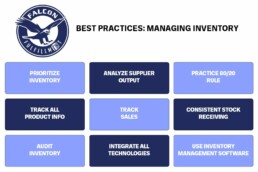
Order Processing
Order processing begins when a customer places an order. The order details are sent to the inventory management system that triggers product selection from the warehouse or storage area. Once the product(s) are selected they are then packaged for shipment.
Shipping
The package is loaded onto a shipping carrier transport and begins the journey to the customer’s address. This part of the journey can involve multiple types of transportation and carriers depending on the size, shape, and requirements of the final-mile delivery.
Returns Processing
Order fulfillment extends beyond the customer receiving their package; it concludes when the customer expresses satisfaction with their purchase. This is why returns are the final aspect of e-commerce order fulfillment. When your business grows to a size where returns become a time-soak, it is probably time to outsource fulfillment and returns management to a larger expert team.
What are the different types of e-commerce order fulfillment?
There are generally three main types of order fulfillment. They include; in-house, dropshipping, and 3PL fulfillment. A fourth type, a hybrid, can involve a cross-section of all three types depending on volume and product types.
In-house fulfillment
In-house or in-store fulfillment is when a company fulfills its orders from its facilities, labor, and resources without the assistance of a third-party provider. Most companies begin by fulfilling orders in-house because it is the most cost-effective fulfillment option that allows for the highest level of control.
Dropshipping
Another popular fulfillment option involves fulfilling orders directly from the manufacturer or vendor without going through the typical fulfillment channels, known as dropshipping. Dropshipping is convenient and affordable but offers limited control over the quality and quantity of inventory. Understanding the pros and cons of dropshipping can help you decide if this is the right fit for your e-commerce brand.
3PL Fulfillment
Third Party Fulfillment (3PL) is where the entire order fulfillment process is outsourced to a third party. These teams specialize in every aspect of e-commerce order fulfillment. They have flexible warehousing, labor, and resources to ensure your business can scale quickly. If you want to maintain tight control of every aspect of order fulfillment, a 3PL may not be suitable for you. However, if you have outgrown your warehouse space or your team is overwhelmed with demand, it might be time to outsource fulfillment.
What is the difference between 1PL, 2PL, 3PL, 4PL, and 5PL Fulfillment?
There are slight differences between the different “PL” providers. 1PL fulfillment involves a supplier fulfilling their orders directly, whereas a 2PL consists of a transportation partner like FedEx, UPS, or USPS. A 3PL is a more extensive operation that alleviates more of the order fulfillment journey. 4PL and 5PL companies take on a more significant role as order fulfillment concierges. The following image illustrates the difference between the different logistics providers.
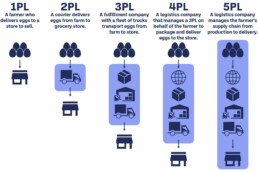
When should you partner with an e-commerce order fulfillment service provider?
- You no longer have the time to focus on your core competencies
- You have outgrown your warehouse space
- Your team is overwhelmed by the demand
- Order errors and returns are increasing
- You know you are paying too much for shipping
- You want to expand into a new market or location (International)
This post about e-commerce order fulfillment is just the tip of the iceberg. There is a whole industry that handles the logistics surrounding order fulfillment. When you first launch an e-commerce business, it can be daunting to know how to get your orders to your customers quickly and effectively. Keeping your customers in mind is the most important aspect of building your business. If satisfying your customer is your top priority, it will guide every decision, including what is the best fulfillment option.
Discover how Falcon Fulfillment can ease the challenge of timely order delivery. Contact one of our knowledgeable agents today to learn more.
Let’s Talk!
Q3 E-commerce Trends to Watch
Q3 E-commerce Trends to Watch
Q3 has ended, and online retailers are seeing a shift in consumer behavior. The main Q3 E-commerce trends to watch include; elongated holiday shopping timelines, social selling, and reduced consumer spending. This post will cover both Q3 e-commerce trends and overarching trends from 2022.
Top Q3 E-commerce Trends to Watch
Consumer Spending Will Change
While we still see strong consumer spending habits, holiday sales are expected to slow. As a result of the economic downturn, holiday sales are projected to grow between 4% and 6%, reaching $1.45 to $1.47 trillion this season compared to an increase of 15.1% during last year’s period, according to a new forecast from Deloitte. With inflation hovering just above 8%, many consumers are making adjustments. According to a recent survey by Bankrate.com and spokesperson Ted Rossman.
“Something has to give. The fact that your rent costs more, your gas, your groceries, there’s a spillover effect to all that.”
Ted Rossman, Bankrate.com
8 of 10 Americans with travel plans are reconsidering or making modifications to save money.
Retailers can expect higher e-commerce sales as customers comparison shop for bargains. E-commerce brands poised for early sales will be in good shape to have a successful Q4.
Holiday Shopping is Coming Early
November typically marks the beginning of Peak holiday sales, but trends show shoppers have already started making gift purchases. According to a Gartner Marketing survey, nearly half of consumers, 48%, plan to shop early for this holiday season, and the big reason is inflation. They are spreading out their spending. Consumers are beginning to scour retail sites for the best deals and promotions, and deep discounts from retailers are expected to be seen early instead of revolving around “Days” or “Weeks” as in years past.
“Consumers will demonstrate less interest in traditional shopping days. Days have become weeks (e.g., Black Friday to Thanksgiving Week, Cyber Monday to Cyber Week, etc.)”
Howard Meitiner, Managing Director, Carl Marks Advisors
Brands that are poised to offer early promotions will be able to capitalize on early sales and offset last-minute delivery complications.
Social Selling is Rising in Popularity and Trust
As a result of COVID-19, consumers found that shopping online could keep them safe and save them money and time. This has increased consumer trust in social commerce. Social commerce is using social media to sell goods or services. From increasing your post frequency to engaging influencers to promote your product, now is the time to double down on social marketing and sales efforts.
Enduring 2022 E-commerce Trends to Watch
Personalization
Consumers are looking for shopping experiences tailored to their preferences. Shoppers are continuing to look for personalization. Personalization includes; displaying recommended products, targeted messaging, and cultivating personalized add-ons. People want their online shopping experience similar to having a personal shopper. AI is powering personalization and getting more accurate by the minute. A brand with a seamless omnichannel experience that offers the best deals and designs for each individual will perform well throughout the end of 2022 and into 2023.
M-Commerce
M-Commerce or mobile commerce will continue to be an e-commerce trend to watch. Mobile purchases are trending to be almost 22% higher than in 2021. It isn’t enough that your site is mobile-friendly; it needs to be optimized for mobile. Consumers are spending more time than ever on their devices. You cannot afford to have a sub-par mobile purchasing experience to capture their attention and their dollars. Here are just a few of the best practices for mobile UX design, according to Toptal.com.
Infographic by Toptal
Chatbots
As AI-powered chatbots become more intelligent, their use in customer service situations is growing. While human connection is still essential in complicated customer service circumstances, a chatbot can more efficiently and effectively share frequently requested information. Furthermore, chatbots are available 24/7, making it feasible to respond to customers instantly, no matter the timezone or time of day. We can expect chatbots in other business areas, including payments, scheduling appointments, and even hiring.
Beginner’s Guide to Third-Party Logistics (3PL)
The world of e-commerce is always changing, therefore understanding the roll of Third-Party Logistics is integral to keeping up. In light of this our beginner’s guide to third-party logistics (3PL) will delve into the essential aspects, offering insights into fulfillment services, warehousing, and much more.
Read More…
While Q3 presents a few new e-commerce trends to watch, they are ever-changing. Moreover, from implementing chatbots to longer sales seasons, it can be overwhelming to keep up. However, Falcon Fulfillment specializes in e-commerce fulfillment. Consequently, we can free up headspace by managing every aspect of product fulfillment, from receiving to last-mile delivery.
If you need breathing room to focus on maximizing revenues, core competencies, and flowing with the e-commerce trends, let Falcon help. Talk to one of our agents today.
Let’s Talk!
5 Last-minute tips for retailers to prep for peak
5 Last-minute tips for retailers to prep for peak
Pumpkin-spice lattes firmly held in the hands of consumers signify that peak season has begun. Shoppers are already starting their holiday gift purchases despite inflation and the looming threat of a recession. Don’t worry if you haven’t had the headspace to plan for the holiday sales season. Here are five last-minute tips for retailers to prep for peak.
Diversify Your Carrier Network
Supply chain delays and carrier incidents are expected during the sales surge from October through the New Year. If you rely on a single shipping carrier, you could find yourself in a shipping and fulfillment nightmare. From weather to traffic, peak season is littered with unforeseen situations. Partnering with multiple shipping carriers allows you to pivot orders should the unexpected.
Over Communicate with Customers
Even if you haven’t stock-piled inventory, now is the time to engage your customers. Not only can you begin peak sales offerings, but now is the time to reach out to suppliers and carriers to determine realistic cut-offs and delivery deadlines. Accurate consumer details on when orders will be received are crucial to maximize peak season and ensure happy customers. Create marketing efforts to encourage early purchases, especially if your carriers are already talking to you about delays. Lastly, if you have the technology in place, now is the time to update automated e-mail correspondence regarding delivery details, returns, and how to get in touch with customer service should it be required. Keeping your customers informed before, during, and after product delivery is the best defense against a poor experience and bad reviews.
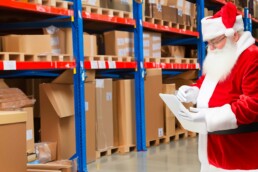
Determine Realistic Stock Availability
Reach out to your suppliers and determine realistic timelines to receive products. If they cannot get your ‘best sellers’ in stock until January, you might need to spin up a new product or engage a new supplier. Most goods are procured from Asian manufacturers because of affordability. However, now might be an opportunity to investigate some of the top manufacturers in the US. A local supplier can often deliver products in a shorter timeframe, even if it might be slightly more expensive. In general, diversifying your suppliers makes your supply chain more resilient. Find out what is possible from your existing vendors and be prepared to pivot on products or suppliers if necessary.
Boost Customer Service Efforts
Not only do sales skyrocket during peak season, but so do customer service issues and returns. Now is the time to boost efforts to streamline your customer experience efforts. While we cannot always avoid returns altogether, we can implement strategies to ensure the returns process is as seamless as possible. Refine your return policy and ensure it is visible and uses easy-to-understand language. Another last-minute tip for retailers to prepare for peak is to retrain customer service staff. Host training on how to deal with common customer service complaints reps deal with during the holidays.
- Product unavailable or out of stock
- Poor product or service
- Lack of follow-up or communications
- No first call resolution
Hire Extra Help
Even if you are late planning for peak, you will still likely need a few extra hands to deal with the sales surge. Depending on your need, make a solid effort to hire help, so your existing staff doesn’t burn out. Many retailers have standard hiring processes for the holiday season but don’t forget back office, warehouse, and service staff needs also increase.
Beginner’s Guide to Third-Party Logistics (3PL)
The world of e-commerce is always changing, therefore understanding the roll of Third-Party Logistics is integral to keeping up. In light of this our beginner’s guide to third-party logistics (3PL) will delve into the essential aspects, offering insights into fulfillment services, warehousing, and much more.
Read More…
Top Last-Minute Tip for Retailers to Prep for Peak
Partner with a 3PL
A 3PL partner can alleviate the pressures of finding a broad network of carriers. They already leverage multiple shipping services and a network of suppliers. A white-glove 3PL can introduce your business to new manufacturers and offer better shipping rates because of their current economies of scale. Furthermore, partnering with a group like Falcon Fulfillment can manage returns and refunds. We are experts in fulfillment and would love to have the chance to help your peak season soar, regardless of how late it might be.
Get in touch with our agents today to see how we can help.
Let’s Talk!
Utilizing fulfillment strategies in times of economic uncertainty becomes a crucial factor for companies aiming to establish stability and drive expansion. By embracing these specialized recommendations, one can effectively address obstacles and emerge more resilient in challenging circumstances. For personalized advice on enhancing your business’s fulfillment methods, consider reaching out to the professionals at Falcon Fulfillment.
If you’re ready to start the transition or have questions, contact us to learn more about our services.
Let’s Talk!
2022 Fulfillment Challenges and Solutions
Fulfillment Challenges and Solutions
It’s old news that eCommerce continues to grow and outpace brick-and-mortar retail sales. By 2040, 95% of purchases will be made online, so it’s time to face eCommerce challenges and solve them. Fulfillment and logistics play a crucial role in the success of an eCommerce brand. This article focuses on the main eCommerce fulfillment challenges and solutions.
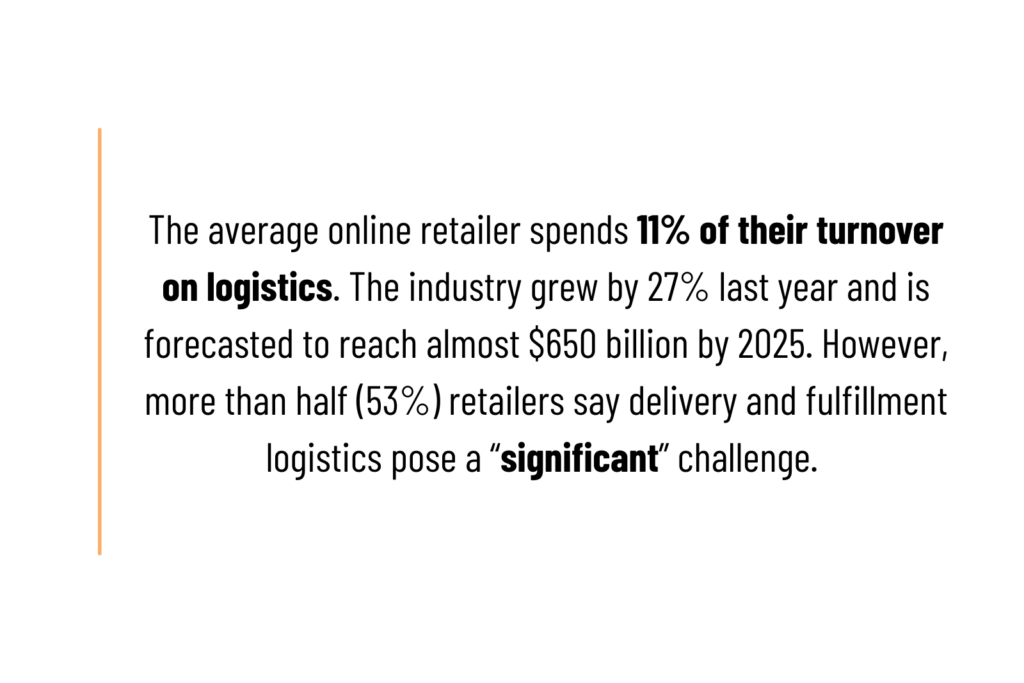
Logistics
Getting orders delivered to customers is sometimes more difficult than attracting them to your eCommerce site. There are multiple facets to logistics; therefore, various fulfillment challenges and solutions are linked to this aspect of eCommerce.
Challenge: Tracking Orders
Tracking orders is one of the main challenges facing companies. Consumers are expecting real-time updates on when and where their purchase is. They have grown accustomed to a steady stream of communication outlining when the package has left the distribution warehouse when it is in transit, and even images of the parcel and where it was left.
Solution: Automated order tracking
Transparency tracking is critical whether you self-fulfill or use a third party to fulfill orders. Leverage an automated communication system to notify consumers of purchase and delivery status. Most white-glove 3PLs offer system integrations that provide reliable order fulfillment details. Furthermore, you improve customer retention by using an automated order tracking system. Streamline the process by investing in a platform or partner that integrates with your customer communication system.
Challenge: Scaling Up and Down
eCommerce brands that want to differentiate themselves in the marketplace must be ready to fulfill demand, especially when launching new products or offering special sales promotions. The ability to scale up and down during busy seasons is a significant challenge. It is difficult to spin up enough staff, product, and fulfillment staff to accommodate a massive influx of orders.
Solution: Flexible Scaling with a 3PL
eCommerce brands rely on flexibility as they scale. For example, during the peak holiday sales season, they made need 3x the staff and order fulfillment capacity as during slower periods. Most successful eCommerce brands rely on a 3PL partner to help manage these resource fluctuations. Leveraging a 3PL affords your brand flexible warehousing space, fulfillment staffing, and kitting services. Your company only pays for what they need, so they have flexible options to grow incrementally.
Challenge: Warehouse Space
Scaling includes the need for flexible warehousing space. As eCommerce brands scale, they need affordable warehousing facilities.
Solution: Pay-for-what-you-need warehouse space
A significant overhead cost for eCommerce brands is warehousing space. Only so much product will fit into your Uncle’s basement. At some point, warehouse space must be rented or purchased. Owning a warehouse outright has high upfront costs and high risks. Renting space can also be costly, depending on the contract lengths and total space usage. The most flexible and cost-effective solution is a 3PL partner who charges you only for the space you use.

High Shipping Costs
The high shipping cost is one of the most significant fulfillment challenges, with various solutions. Although there isn’t a quick fix, there are several ways to reduce shipping costs and boost profitability.
Challenge: High Costs
By March of 2021, shipping costs had skyrocketed. The estimated increase in shipping costs was 350% higher than the previous year. Shipping container shortages, COVID-19 lockdowns in Asia, and a global supply chain staffing shortage have contributed to the higher shipping costs. There have been slight indications that the supply chain bottleneck is loosening, but high shipping costs remain. This is a significant challenge to SMBs that must choose whether to pass these added costs to consumers or suffer lower profitability. Whether you ship t-shirts or TVs, shipping is an unavoidable expense that directly affects your bottom line.
Solution: Diversify Manufacturers
If your primary or only manufacturing vendor is in China, you already know the potential for disaster. An excellent option to improve your supply chain resilience and decrease shipping costs is to partner with a local manufacturer. Reducing the distance will automatically reduce the shipping cost.
Solution: Invest in Delivery Infrastructure
You may want to invest in your in-house delivery infrastructure if you are sick of being at the mercy of carrier inconsistencies and constant price increases. This requires a significant amount of up-front capital, but it puts you in control of all aspects of shipping and delivery services.
Solution: Ensure Right-Size Packaging
Ensure that your package and packing materials are as small and lightweight as possible without sacrificing the protection of the product. Reducing the dimensions and overall weight of a package will reduce shipping costs. You can also investigate alternative shipping materials like poly mailers instead of corrugated boxes.
Solution: Partner with a 3PL
A competent 3PL partner has relationships with a broad network of shipping carriers. They benefit from economies of scale for reduced shipping costs and lower packaging material costs. They share that benefit with their clients. Furthermore, they can offer a variety of shipping options that will help customer retention.
Solution: Offer Shipping Alternatives
Offer shipping alternatives like BOPIS (buy online pickup in-store), locker pickup, or direct delivery to local customers. Investigate all the shipping alternatives that work for your brand to help reduce shipping costs.

Product Returns and Refunds
Challenge: High Return Rates
Consumers are buying more and returning more. In 2021 retailers expected a return rate of around 16.6%, which jumped from 10.6% in 2020. Products purchased online have a higher rate of returns than those purchased in-store. It is easy to toss a product into the virtual cart and have a very unclear picture of what those items will look like in your home or your body. The more generous or flexible the return policy, the more likely a consumer will over-purchase.
Solution: Invest in Visualization Technology
Many eCommerce retailers have started to invest in 3-D visualization tools to help customers make better choices when making a purchase. Virtual reality software has grown in popularity, especially with large or bulky retailers like furniture retailers, to help consumers visualize what pieces will look like in the space. Investing in technology that allows a customer to envision the product can help reduce the number of returns.
Solution: Beef Up Product Descriptions and Specifications
Adding more details to your product descriptions is a simple yet often overlooked solution. Ensure all appliances, furniture, and other bulky items have precise dimensions in the product details. Create accurate and detailed size charts that correlate directly to body measurements. Give your customers every opportunity to make a fully informed choice.
Solution: Clear and Easy Returns Policy
A survey by comScore and UPS showed that 63 percent of American consumers check the return policy before making a purchase, and 48 percent would shop more with retailers offering hassle-free returns. Consumers will buy more if the process of returning is as easy as it is to buy. They have confidence that getting their money back won't be a hassle if it doesn’t work. Start by reverse engineering the purchase journey. A few best practices for your returns policy:
- Be transparent.
- Use plain easy to understand language.
- Educate staff on the policy and how to handle everyday return situations
- Be prepared to issue refunds
Many eCommerce brands outsource the returns and refund process to a logistics partner who can handle receiving, inspecting, and adding back to inventory. Regardless, it is crucial to focus on a strategy for returns and refunds that is sustainable and protects profitability.
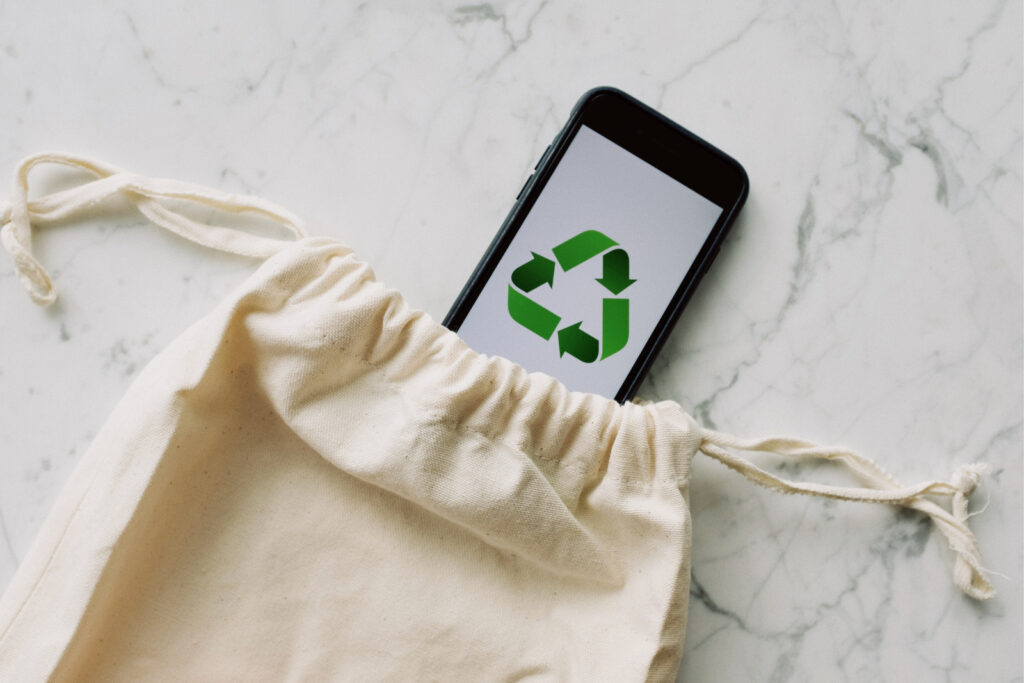
Sustainability
Challenge: Cost and Confusion of Sustainability
Nearly 60% of consumers are ready to alter their purchase patterns to lessen their impact on the environment. Consumers are looking for brands that prioritize the environment, reduce carbon emissions, and have a clear sustainability plan. However, the upfront costs of switching supply chain processes to more environmentally friendly sources can disintegrate profits. Determining what types of sustainability to invest in can also be confusing because there isn’t a single definition of what makes a company fully “sustainable.”
Solution: Start with Swapping Packaging
Even though sustainability can be confusing and costly, a quick win is swapping packaging materials for sustainable options. It can be as simple as replacing polystyrene packing peanuts with green cell foam or custom biodegradable shapes. Bonus: biodegradable shapes provide a personalized touch to your unboxing experience too! Making a small start is better than nothing at all.
Solution: Reduce Transportation Emissions
Optimize your transportation schedule to fill every container to minimize the wasted space and lower your CO2 emissions. The more boxes in a load, the fewer trips it takes to reduce emissions. Partnering with an environmentally-focused 3PL can help you create a sustainable business.
In 2022 ECommerce businesses are facing some complex fulfillment challenges. From logistics to sustainability, companies are working hard to find solutions that meet growing customer demand without losing profitability. Fortunately, partnering with a quality 3PL can help alleviate several of these challenges. Falcon Fulfillment specializes in logistics, reverse logistics, and sustainability. If your eCommerce faces any of these challenges, see how Falcon might be able to help. Get in touch with one of our helpful agents today.
5 Indicators It's Time to Change Fulfillment Providers
Indicators it’s time to change fulfillment providers
If you are running a successful e-commerce, you have spent countless hours perfecting your product, brand, and user experience from purchase to return. In addition, you likely partnered with a fulfillment company to help deliver and grow your business. You may have started to feel dissatisfied with how things are going. Here are five crucial indicators that signal it’s time to change fulfillment providers.
Limits on where orders can be shipped
Your fulfillment partner must be able to fulfill orders wherever your customers are! Ideally, your fulfillment warehouse is near your customers. This becomes difficult as e-commerce brands grow and reach a wider audience. Scaling your business with a 3PL might be a good idea. A change in fulfillment providers can help leverage a more comprehensive distribution network and ensure deliveries can be processed quickly.
Long order processing and shipping times
Customers are more demanding than ever when it comes to shipping times. The “Amazon Prime-Effect” has solidified the idea that any product ordered from anywhere shouldn’t take more than two days to process and never more than five to arrive. If your orders take more than three days to process and ship, it could indicate it is time to change fulfillment providers. Most 3PL partners that can genuinely help your company scale will be able to process and ship an order anywhere in the continently US within 2-days. Your business could suffer if your service provider cannot consistently meet this timeline.

Inventory is taking days or weeks to be stocked and added
Accurate inventory data is crucial to a successful e-commerce. Having inventory readily available within 24-36 hours is game-changing. Nothing frustrates an e-commerce business more than knowing a large product shipment has arrived at the warehouse but sits on a pallet waiting for stocking and addition to the inventory management system. This typically indicates a lack of staff or organization. The longer this process takes, the more sales potential you lose. If it takes more than a few days to get your inventory added, it might be time to change fulfillment providers.
Confusing invoicing or billing
Managing the financial reporting of a successful e-commerce is problematic on a good day and mind-numbing on a bad day. Top-rated 3PL providers offer complete itemized billing transparency. Having a financial report that details every charge with open-honest billing can help highlight advantages and opportunities for process change. When your fulfillment partner cannot give a detailed and accurate invoice about where their charges stem from, it is time to move on. The decisions you make are only as good as the data on which they are made.
Negative customer reviews regarding shipping
Negative customer reviews are an obvious indicator it is time to change fulfillment partners, because only one bad review can drive away up to 22% of potential customers. If you have noticed more than one poor review related to shipping or final delivery, your company cannot afford to ignore it.
Beginner’s Guide to Third-Party Logistics (3PL)
The world of e-commerce is always changing, therefore understanding the roll of Third-Party Logistics is integral to keeping up. In light of this our beginner’s guide to third-party logistics (3PL) will delve into the essential aspects, offering insights into fulfillment services, warehousing, and much more.
Read More…
Seeing that it might be time to change fulfillment providers can be daunting. The process involves confusion, overwhelm, and a lot of resources. However, at Falcon Fulfillment, we pride ourselves on onboarding new clients in days or weeks, not months. We offer a dedicated account manager throughout the onboarding process and beyond. Our team will do the heavy lifting so you can focus on growing your business. When our customers changed their fulfillment partner, we delivered!
Want to learn how working with Falcon can help your e-commerce business scale? Get in touch with one of our agents today.
Let’s Talk!
Grow Your Beer Subscription
Grow Your Beer Subscription
Craft-brew, micro-brew, and larger distillers endured the screeching halt in sales in 2020, courtesy of a global pandemic, and survived because they pivoted their business models. Even though sales were no longer flowing from local bars and restaurants, people were still drinking. Many beer providers launched beer subscriptions and created a direct-to-consumer (D2C) model. This pivot helped existing beer makers fulfill consumer demand without relying on a face-to-face establishment. Even though most of the country is now open for business, beer makers are not only continuing their beer subscriptions but doubling down on them. This article will discuss the benefits of launching a beer subscription, possible complications, and how to grow your beer subscription.
Benefits of Offering a Beer Subscription

Cash Flow Predictability
Cash flow predictability is one of the main reasons to launch a beer subscription. Do not rely solely on the ebbs and flows of sales through distributors, bars, and restaurants. A beer subscription allows your brewery to capitalize on a consistent revenue stream month-over-month. Furthermore, cash flow predictability helps build investment capital to grow the business beyond its current stage.
Higher Margins
Not only does offering a beer subscription provide consistent cash flow, but it also provides higher margins on products than wholesale or retail. Effectively, you cut out the middle man when you offer a DTC beer subscription program. As a brewmaster, you can make more money for the hard work and craftsmanship you put into each bottle. Your customer will thank you as well. More than 84% of craft beer drinkers claim they would like to receive their favorite beverages delivered directly to their homes.
Higher Customer Retention, Lower Acquisition Cost
With a beer subscription, you can personalize the products according to their tastes. Tailor their subscription to their flavors and seasonal preferences. Not only that, but you can build entire engagement communities around your subscribers. From offering private content to marketing contests to win more beer, your customers feel like they are part of the fun. Consumers who jump from being brand aware to becoming brand advocates stick with your company longer than a one-shot-imbiber. In addition to retaining and engaging customers, offering a beer subscription can lower acquisition costs. If you already put in the effort and resources to get someone to sip your suds, it’s a quick transition to offer the ongoing beverage enjoyment. This is particularly easy in the craft-brew industry, where customers pride themselves on experiencing unique brews.
Complications of Beer Subscriptions

Restricted DTC Shipments
As of July 2022, only Ten states and the District of Columbia allowed for DTC beer shipments. A few states allow for a modification in direct-to-consumer shipments. Some states allow consumers to purchase face-to-face in another state and have it shipped directly to them. Another alternative is for a distributor to ship products to a retailer in the consumer’s state of residence for a local pickup. In Montana, residents can purchase a “Beer Connoisseur’s License,” which allows them to have beer shipped directly to their homes. Ironically, wineries have access to nearly 97% of adults aged 21 and older in the US. While DTC beer shipments still face complications, the demand is high, and legislation change is likely.
Compliance Is Complicated
Similar to the restrictions on DTC shipments, other regulations plague the beer subscription model. Remaining compliant when shipping state to state is confusing and often requires the expert knowledge of a regulatory attorney in order to abide by the law. Whether you are orchestrating a home delivery or managing a retailer shipment, violating one aspect of the alcohol legislation could cost you your license and ability to sell in the state. Check out beer distribution laws in your state.
Fulfillment Obstacles
When launching or growing a beer subscription, inventory must be produced, stored, shipped, and allocated with a high degree of intention. Coordinating pick-ups, warehouse receivables, and speedy delivery to maintain product quality becomes tricky. To fulfill the beer subscription model effectively, it typically requires a committed internal employee to manage the intricate details. Additional staffing is needed when your brewery wants to offer a seasonal sale, promotion, or event. Not only must the subscription inventory be protected, but it is also first in line for the special promotion. (Remember, that is how customer retention is maintained.) The need to place beer subscribers’ products in a particular place or staging area increases the need for allocated warehouse space.
5 Ways to Grow Your Beer Subscription

Upsell
One of the easiest ways to grow your beer subscription is to upsell existing subscribers. Offer them more value for more revenue. Whether you offer a slightly higher price point for a few more bottles of liquid craftsmanship or merch, this is the easiest way to increase profits and customer satisfaction.
Award Social Proof
The trend across eCommerce that is not going away anytime soon is social selling or social proof. This is the psychological phenomenon whereby people make decisions based on the behaviors and actions of others. Simply put, we buy based on whether or not our friends, social community, or the broader world is doing the same thing. Customer reviews, shares, likes, and tweets are all ways your consumers can help you tap into unexplored territory! Offer customers free tastings, first look, and even trips to the brewery in exchange for sharing their tasting experiences, reviews, and shares of promotions.
Create an Affiliate Model
Similar to the social proof idea, you can offer serious beer subscription advocates a slice of the pie for every new subscriber that uses their link. Most social influencers make a lot of money through affiliate marketing! Any person who is passionate about your beer can become an affiliate and share their love with their friends, family, and followers. The profitabilities are endless when you produce a quality product and award your loyal customers.
Offer Speedy Shipping
The most notable drawback for one of the US’s top beer subscriptions was that it took anywhere from 10-15 days to receive their shipment. That is simply too long for a serious craft-brew snob to wait. Whatever you have to do, make sure that once a customer enrolls for their subscription, they receive their box within 2-3 days tops!
Streamline Beer Fulfillment
Provide your beer subscription customers with a white glove fulfillment experience. A premier fulfillment company can help increase sales and recurring customers by ensuring a branded subscription package is delivered promptly at a price that can beat traditional retail and wholesale margins. Falcon Fulfillment can package and ship your beer subscription with “same-day” efficiency. They also provide inventory management flexibility for irregular seasonal brews, holiday promotions, and new product launches.
Beginner’s Guide to Third-Party Logistics (3PL)
The world of e-commerce is always changing, therefore understanding the roll of Third-Party Logistics is integral to keeping up. In light of this our beginner’s guide to third-party logistics (3PL) will delve into the essential aspects, offering insights into fulfillment services, warehousing, and much more.
Read More…
Leveraging a fulfillment company like Falcon can free you up to focus on producing the best darn beer ever and less on managing the logistics of getting the product into the consumer’s hands.
Check out more about Falcon’s beer and wine fulfillment, or talk to one of our agents today.
Let’s Talk!
White Glove Fulfillment - What it is and why you need it
White Glove Fulfillment – What is it?
White glove delivery, fulfillment, and service are common buzzwords in the fulfillment and transportation industry. So what exactly is “white glove fulfillment?” The term white glove finds its roots in the fact that posh English butlers would wear white gloves. White glove offerings are defined as providing meticulous care, attention, or service. When referring to white glove fulfillment, it implies a company or organization provides the highest level of excellence in the logistics industry. From receiving through final delivery, they demonstrates a superior level of attention to every detail. White glove fulfillment is also sometimes called “premiere fulfillment.” in this article, we will outline the minimum standards of a white glove fulfillment company and why you need them.
White Glove Fulfillment – Minimum Expectations
Standard of Excellence in Product Handling
Premium delivery services specialize in products like artwork, furniture, antiques, and fragile items like pottery or china. White glove fulfillment companies provide this same type of attention to detail for every product they fulfill. When a shipment arrives at the distribution warehouse, teams have specific instructions on storing, staging, and prepping the items to deliver when orders are received efficiently. Furthermore, premiere fulfillment teams provide accurate and traceable pick-n-pack services that limit inventory shrinkage and product damage.
Dynamic Problem Solving
Fulfillment provides the network, staff, and resources to ensure products are accurately received, staged, stored for packaging, and shipped quickly as orders fluctuate. Logistics operations are a delicate balance between multiple carriers, manufacturers, and transportation organizations. The entire workflow is negatively impacted if any system piece is non-functioning or even delayed. Partnering with a premiere fulfillment company ensures a higher standard of problem-solving. They will leverage every available resource to iron-out kinks in the workflow. Premiere fulfillment services are game-changing when complications arise, from utilizing a broad network of routes and providers to reconfiguring a warehouse floor to stage products for a last-minute sale.
Expert Branded Packaging and Unboxing Experiences
Nothing will elevate a brand more than a unique unboxing experience. Envision a customer who ordered a cocktail dress. That customer is probably not expecting it to come in a right-size, sustainable package, wrapped with every detail, including a personalized note and detailed garment care instructions. However, when you partner with a white glove fulfillment company, that is the experience your brand can create. Consumers have grown accustomed to the familiar “smile arrow” on every amazon box, so when a new type of box arrives, it holds a bit of mysterious anticipation! That brand is already set apart from the rest. White glove service teams are experts in utilizing unique packaging that will decrease the likelihood of damage and maintain profitability. Simply selecting the right-sized packaging can help boost profitability.
Adept at Temperature Sensitive Product Fulfillment
Not every product can remain stored at room temperature or above. Certain products such as beer, wine, and select beauty items necessitate maintaining specific temperature minimums and maximums to preserve their quality. If you entrust an ordinary fulfillment company with these products, you will likely experience disappointment. There are many fulfillment companies specializing in these types of shipments. However, a white-glove fulfillment often manage these deliveries with as much care and accuracy. The bonus with using a white glove fulfillment team is that they can create a unique opening experience, as mentioned above. When someone opens their favorite micro-brew and receives a complimentary taster of the newest summer shandy, they just might become a brand advocate!
Accurate and Transparent Tracking
Sending accurate product delivery notifications greatly increase customer satisfaction. Consumers aren’t content to wait in limbo about when they will receive their purchases. Top-tier fulfillment teams take pride in ensuring a quick turnaround for delivering orders and precisely tracking the location of a package at any given point in the cycle. Premiere fulfillment companies often leverage dynamic tracking software to provide the most detailed insight on a shipment’s final delivery. This is vital in improving customer satisfaction scores and minimizing missed deliveries.
Premium Customer Service
Endless loops of text-bot customer service platforms cause a higher level of customer dissatisfaction than having a proactive customer response team. Any business owner understands that during moments of customer frustration, it’s crucial not to keep them waiting for answers. A premiere fulfillment company offers the highest standard of communication available to their clients. Whether that is a dedicated account manager or a 24/7 hotline, they have a person standing by to quickly answer your questions and get your business back on track. Not only do they offer a more face-to-face customer service experience, but they also have a polite and professional manner. Like the English butler, a white glove fulfillment team member understands that how they speak is as important as what they say.
Why Your Business Needs White Glove Fulfillment

Any e-commerce company wants to partner with a white glove fulfillment team because it can mean the difference between creating a happy customer and earning a brand advocate. Keeping customers happy is the minimum requirement of any good business. Creating brand advocates should be the goal. How would partnering with a fulfillment team like this help create brand advocates?
Faster Fulfillment and Detailed Delivery Information
Customers expect confirmation emails when they order and when they anticipate the delivery. Now more than ever, consumers want notifications when a delivery is delayed, dispatched, and confirmation of the final drop-off location. The Amazon effect primarily causes this. Not every e-commerce business has the network, purchasing power, and delivery resources of Amazon. Partnering with a white glove fulfillment team can help them provide a similar experience that ensures customer satisfaction without needing the same capital.
Memorable and Shareable Unboxing Experiences
There is something very satisfying about watching someone unbox something. Maybe it is a nod to years of watching people open birthday presents or Christmas gifts that cause us to lean in. Premiere fulfillment teams can help create and deliver TikTok-worthy unboxing experiences. Depending on your brand product and use, you can customize the packaging, opening instructions, and shareable links to capitalize on the unboxing. With other fulfillment teams, you don’t have as much assurance that the product will not include additional marketing collateral or arrive damaged. Creating a memorable and shareable unboxing experience is another way to tip a customer over to a brand advocate.
Professional and Polite Returns and Exchange Management
A top-tier fulfillment team can manage the final distribution stages, including returns and exchanges. They manage the entire process of receiving returned goods, inspecting returned items, and accurately restocking and updating inventory. Above and beyond, they provide reports for all returns and can even help modify or update returns policies to protect and increase profitability. In e-commerce’s competitive landscape, your business cannot afford to have a complicated return and exchange policy. That said, if you make it as easy on the consumer as possible, you inadvertently make it more difficult for your business. Partnering with a white glove fulfillment team alleviates the complex and time-consuming returns and exchange management process.
Beginner’s Guide to Third-Party Logistics (3PL)
The world of e-commerce is always changing, therefore understanding the roll of Third-Party Logistics is integral to keeping up. In light of this our beginner’s guide to third-party logistics (3PL) will delve into the essential aspects, offering insights into fulfillment services, warehousing, and much more.
Read More…
White glove fulfillment organizations go above and beyond for you and your customers. E-commerce businesses with a premiere fulfillment partner can reclaim precious time and provide the highest level of logistic service without paying “English Butler” money. If you want to learn more about how Falcon Fulfillment can become your white glove fulfillment partner get in touch today.
We would love to help your brand provide your customers with the highest accuracy, attention, and prompt fulfillment.
Let’s Talk!
6 Fulfillment Lessons from 2021
Fulfillment Lessons from 2021
E-commerce hit record numbers in 2020 despite the pandemic. The spike in online shopping continued through 2021, even as the lockdowns loosened. Those businesses that outperformed others were strategic in their investments and partnerships. Fulfillment partnerships were crucial in sifting the success stories. Here are a six fulfillment lessons from 2021.
#1 Diversification is Critical
The supply chain backlog will continue to be an issue through 2022 based on lockdowns and shortages coming out of Asia. The most successful e-commerce brands diversified their logistics plans by expanding relationships with suppliers, vendors, import/export partners, and fulfillment companies. Businesses can no longer have solitary partnerships within their logistics framework.
Manufacturing
Sourcing multiple manufacturing partners will be a strategy to continue to explore and employ during 2022-2023. Parts and products were hard to source in 2021. The main issues were the lack of products exported from Asia, which caused many e-commerce businesses to turn to domestic providers. Look for multiple manufacturing partners, both global and local. This can help hedge unforeseen delays, tariffs, or political regime shifts that might halt production.
Fulfillment Partners
In addition to manufacturing, expanding fulfillment partnerships is another key to maximizing sales and minimizing delays. Choose a fulfillment partner that has multiple distribution centers. Multi-site fulfillment partners will be the most effective as they provide an additional layer of diversification. The best fulfillment partners will also have working and healthy relationships with other logistics-related organizations. E.g., Suppliers, shipping carriers, and shipping supply manufacturers.
Technology
Lastly, it was a massive year for technology. When tech works, it’s fantastic; when it crashes, it is devastating. e-commerce companies that had tested and tried their technology and expanded their tech investment rose to the top of the food chain. The global pandemic brought a massive need for technology infrastructure for fulfillment and logistics. Some key areas where tech made all the difference were inventory management and real-time transportation tracking.
#2 Offload Inventory
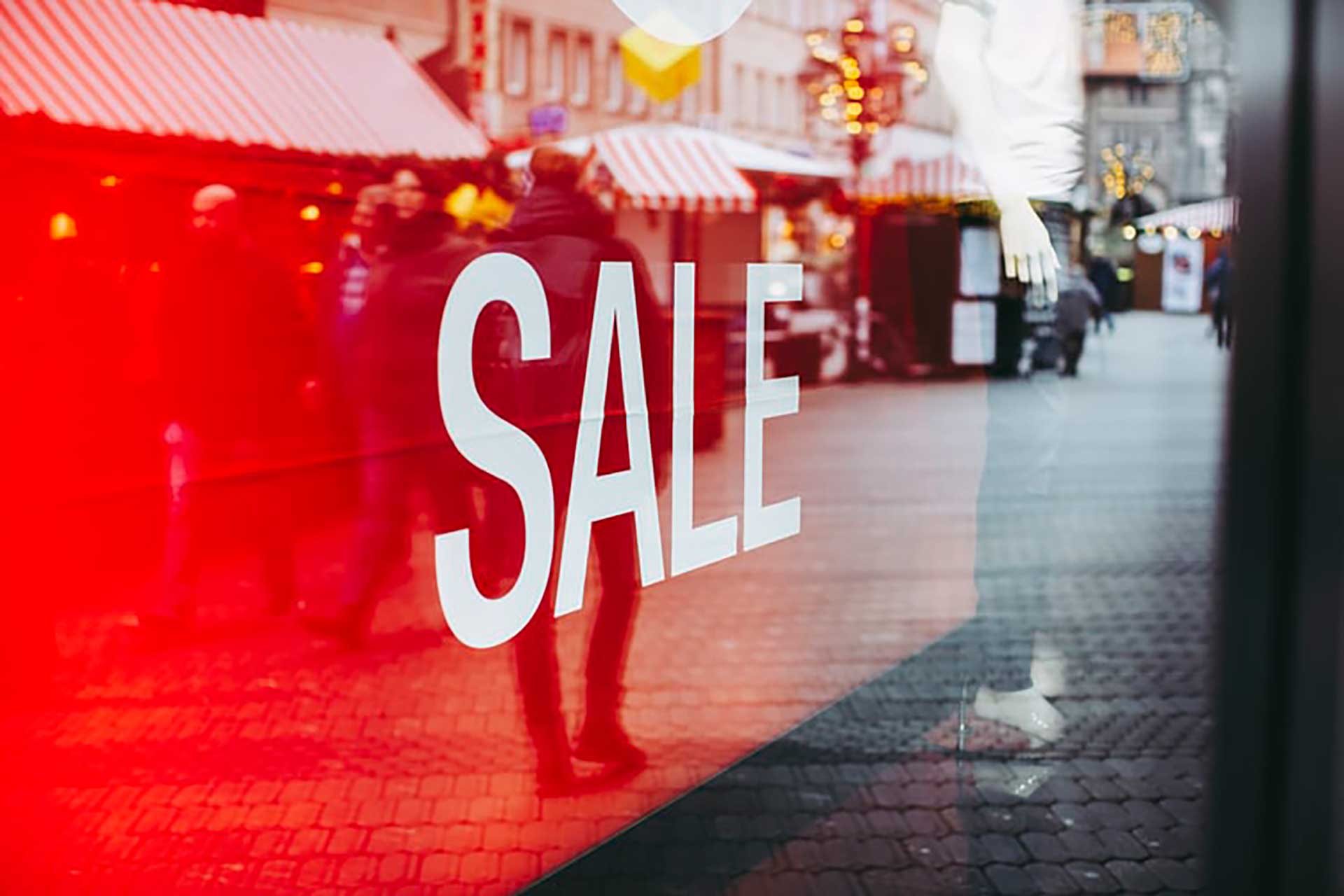 If 2021 didn’t bring massive sales of specific SKUs, it is time to liquidate those assets. Besides paying for unnecessary storage, having slow-moving or dead stock is also a symptom of overbuying or poor forecasting. Revisit your inventory management tools and determine what products are moving and are projected to continue to do well. Then off-load product that is no longer moving. One of the best benefits of using an automated inventory management system is accessing perpetual tracking. Leveraging this kind of technology can help strategically run marketing campaigns like BOGO when slow-moving stock needs to make way for higher-selling products. Some ideas to help with liquidating inventory include:
If 2021 didn’t bring massive sales of specific SKUs, it is time to liquidate those assets. Besides paying for unnecessary storage, having slow-moving or dead stock is also a symptom of overbuying or poor forecasting. Revisit your inventory management tools and determine what products are moving and are projected to continue to do well. Then off-load product that is no longer moving. One of the best benefits of using an automated inventory management system is accessing perpetual tracking. Leveraging this kind of technology can help strategically run marketing campaigns like BOGO when slow-moving stock needs to make way for higher-selling products. Some ideas to help with liquidating inventory include:
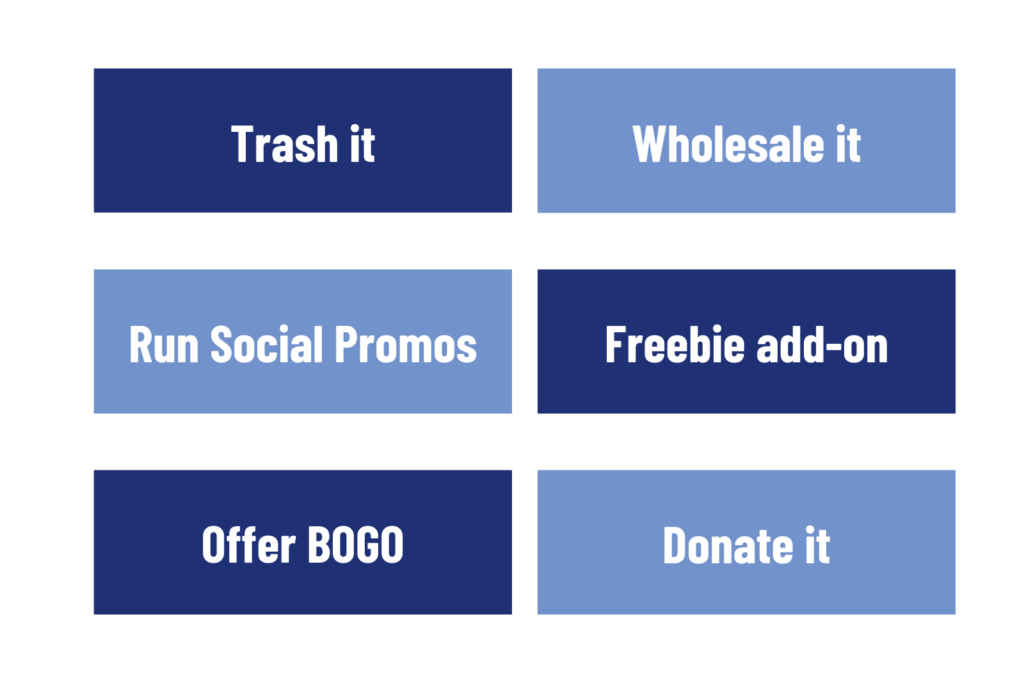
#3 Automate Customer Service Communications
The post-pandemic consumer expects a higher level of communication. Confirmation and tracking emails to consumers have a 60% open rate. E-commerce customers want to know their order was processed, when to expect it, and if any delays occur. Ensure that your fulfillment communication strategy is as automated as possible. From confirmed order, to final delivery and satisfaction surveys, everything should be as seamless as possible. Invest in building out workflows that alleviate customer support tickets.
#4 Build Out Longer Timelines
One fulfillment lesson from 2021 that stands above the rest is the likelihood for delays. From manufacturing to supply chain, delays were one of the single greatest problems and frustrations for e-commerce businesses. Those companies that rose to the top had contingency plans that built out longer timelines. They preemptively ordered parts and components before they actually needed them. Furthermore, they extended delivery times when they knew it wasn’t likely they would meet the 2-day shipping expectation. Building out a longer timeline will help hedge unavoidable lags in receiving, production, and final delivery.
#5 Social Proof Sells
 No matter what type of e-commerce you run, social proof selling is here to stay. More than ever before consumers are consulting reviews, star ratings, and social media popularity that a brand has before making a purchase. This idea will continue to grow and become more immersive, especially as e-commerce and the metaverse converge.
No matter what type of e-commerce you run, social proof selling is here to stay. More than ever before consumers are consulting reviews, star ratings, and social media popularity that a brand has before making a purchase. This idea will continue to grow and become more immersive, especially as e-commerce and the metaverse converge.
#6 Adapt for Continued Supply Chain Issues
The supply chain is slowly recovering but it is not in a place of strength. e-commerce has to be prepared to pivot at any moment in order to accommodate for ongoing supply weaknesses. Take into consideration the entire fulfillment journey. Falcon Fulfillment provides a full supply chain management suite. However, if you choose to manage your supply chain in-house or with another fulfillment partner ensure they can manage flexible shipment handling from your manufacturer as well as streamlined delivery logistics. These two components allow you to receive products in varying packaging and provide end-to-end communications on orders.
Beginner’s Guide to Third-Party Logistics (3PL)
The world of e-commerce is always changing, therefore understanding the roll of Third-Party Logistics is integral to keeping up. In light of this our beginner’s guide to third-party logistics (3PL) will delve into the essential aspects, offering insights into fulfillment services, warehousing, and much more.
Read More…
We learned a lot of fulfillment lessons from 2021. The insights and strategies employed by the most successful e-commerce businesses are crucial in 2022 and beyond. Diversifying everything from manufacturing to technology helped companies overcome demand and delays. Offloading inventory, automating communications, and leveraging social proofing improved the bottom line. Lastly, building out longer fulfillment timelines and being prepared for continued supply chain weaknesses will separate the prosperous from the pitiful in 2022. Falcon Fulfillment can help implement all of these lessons.
We are a people-first business that succeeds when our customers succeed. Get in touch with one of our agents today.
Let’s Talk!
